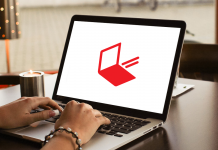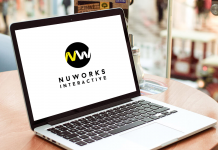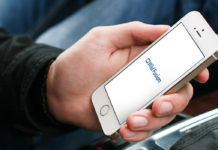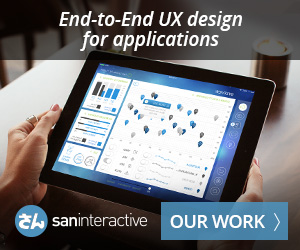Personalization has become an integral part of our lives, shaping our online interactions and affecting our views, perceptions and experiences in more ways than one. Consider online shopping, where e-commerce platforms utilize personalization to affect our shopping journeys. By analyzing our past purchases, browsing behavior, and preferences, these platforms recommend products that align with our tastes, making the shopping process more tailored and efficient.
In the world of UX design, personalization involves the tailoring of web page experiences to individual users. By understanding their preferences, behavior and context, UX design agencies can create customized interfaces that provide relevant content, streamline user journeys and ultimately enhance user satisfaction. This article explores the concept of personalization, its significance in UX design, the benefits it offers, as well as the challenges it presents and possible solutions.
What is personalization?
Personalization refers to the process of tailoring content, interactions, and experiences to the unique characteristics and needs of individual users. It involves leveraging data and insights to provide relevant and targeted information to users, enhancing their engagement and satisfaction. In the context of landing page UX design, personalization focuses on creating on-page experiences that adapt and respond to users’ preferences, behavior, demographics, and other relevant factors.
Amazon’s product recommendation system relies heavily on personalization. By analyzing user browsing and purchase history, as well as considering factors like demographics and location, Amazon customizes the product suggestions displayed to individual users. This approach not only enhances the user experience by showcasing items that align with users’ interests but also drives increased conversions and sales for the company.
Personalization methods
Creating customized experiences that resonate with each user on an individual level requires relying on different personalization methods. These methods leverage data and innovative techniques to cater to user preferences, behavior and context. Here are some of the popular methods being used in the personalization process.
- User Profiling: This method involves creating detailed profiles of individual users based on their demographics, behavior, preferences, and other relevant data. By collecting information through user registrations, surveys, and tracking user interactions, businesses can understand users on a deeper level. User profiles serve as a foundation for delivering personalized experiences by tailoring content and recommendations to specific user segments.
- Content-Based Filtering: Content-based filtering involves recommending items or content to users based on their preferences and characteristics. This method relies on analyzing the attributes and properties of items or content, as well as the user’s previous interactions and preferences. For example, if a user has shown a preference for action movies in the past, a content-based filtering algorithm can recommend other action movies based on similar genres, directors, or actors.
- Rule-Based Personalization: Rule-based personalization involves defining predefined rules or conditions that determine the content or experience delivered to users. These rules can be based on various factors, such as user demographics, location, past behavior, or interactions. For example, an e-commerce website may display different product recommendations based on the user’s gender or purchase history.
- Machine Learning and AI: By leveraging algorithms and predictive models, businesses can analyze vast amounts of user data, identify patterns, and make accurate predictions about user preferences and behavior. Machine learning algorithms can adapt and improve over time as they gather more data, providing increasingly accurate and personalized recommendations.
- A/B Testing: A/B testing involves presenting different variations of a webpage or feature to different users and analyzing their responses to determine which version performs better. By conducting experiments and comparing user behavior, businesses can optimize their designs and personalize experiences based on data-driven insights.
- Dynamic Content: Dynamic content personalization involves modifying the content of a web page in real-time based on user data and behavior. It allows designers to present different content blocks, images, or messages to different users based on their preferences, interests, or journey stage.
These methods often work in combination to create personalized experiences for users. Implementing these methods effectively requires a deep understanding of user needs, data analysis, and iterative design practices to continuously improve the personalization efforts.
The role of personalization in UX design
Personalization provides tailored web experiences that meet users’ unique needs and expectations. It focuses on delivering the right content, at the right time, through the right channels, resulting in several significant benefits for both users and businesses.
Spotify’s “Discover Weekly” playlist is an excellent illustration of personalization in UX design. Based on users’ listening history, behavior and musical preferences, Spotify curates a playlist of new songs and artists each week, tailored to individual tastes. This personalized approach not only keeps users engaged and satisfied but also helps Spotify retain its user base by offering a useful music discovery experience.
The benefits of applying personalization in UX design
Personalization in UX design is more than just a trend; it’s a strategic approach that yields compelling advantages for users and business owners. By tailoring experiences to individual preferences, personalization moves beyond generic interactions, building connections that cultivate lasting loyalty. Here are the main benefits of integrating personalization in UX design.
Enhanced user engagement
Personalized experiences capture users’ attention and keep them engaged by offering content and features that align with their interests. By presenting users with relevant information, businesses can reduce bounce rates, increase page views, and encourage users to spend more time on their websites or landing pages.
Improved conversion rates
By delivering personalized content, recommendations, and calls-to-action, UX designers can guide users toward desired actions, such as making a purchase, signing up for a newsletter, or filling out a form. This targeted approach has been proven to increase conversion rates and boost overall business revenue.
Enhanced user satisfaction and loyalty
Personalization demonstrates that businesses understand and value their users, leading to increased satisfaction and a sense of being valued. Satisfied users are more likely to become loyal customers, advocate for the brand, and engage in repeat interactions, thereby contributing to long-term business success.
Main challenges of using personalization in UX design
While personalization offers numerous benefits, it also poses certain challenges that need to be addressed to ensure successful implementation.
- Data collection and privacy: Gathering the necessary user data for personalization can be a complex task. Privacy concerns and regulations require businesses to be transparent about data collection and use, clearly communicating the benefits users will receive in exchange for sharing their information. Obtaining explicit user consent and adhering to privacy regulations build trust and alleviate privacy concerns.
- Data accuracy and quality: Personalization heavily relies on accurate and relevant user data. However, data inconsistencies, outdated information, and inaccurate assumptions can lead to poor personalization outcomes. Ensuring data accuracy and maintaining data quality standards are critical for effective personalization.
- Technical infrastructure and scalability: Implementing personalization at scale requires robust technical infrastructure capable of handling vast amounts of data and providing real-time customization. Utilizing scalable platforms and automation tools streamlines the personalization process, making it more manageable.
Summary
Personalization is a powerful tool in UX design that enables businesses to create tailored and engaging experiences for their users. By leveraging user data and insights, designers can deliver relevant content, improve user engagement, boost conversion rates and increase user satisfaction and loyalty. Despite the challenges of data collection, data accuracy and technical implementation, addressing these hurdles can help maximize the potential of personalization. Embracing personalization as a core principle in UX design empowers businesses to meet users’ expectations in an increasingly competitive digital landscape.
We recommend that you check our inventory of the best UX agencies from around the world. You can also learn more on how to choose a good UX design agency and what are the most important questions you should ask before hiring a UX agency.










































